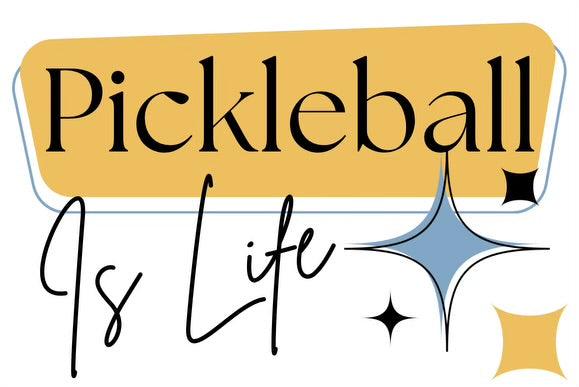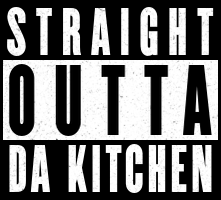
Mastering the Dink Shot in Pickleball 2: Strategy and Techniques for Success
Share
In pickleball, the dink shot is one of the most crucial weapons in your arsenal, especially when playing at a higher level. It’s a soft, controlled shot that requires finesse and patience, and when executed well, it can give you the upper hand in any rally. The dink is used to disrupt your opponent's rhythm, keeping the ball low and forcing them to hit up, which can lead to mistakes or create opportunities for an aggressive shot.
In this post, we’ll cover the strategy behind the dink shot, as well as the essential techniques you need to improve your dink game.
Why the Dink is Important in Pickleball?
The dink shot is designed to keep the ball low and short over the net, making it difficult for your opponents to attack. Unlike powerful drives or volleys, the dink requires more control and precision. A good dink forces your opponent into a defensive position, limits their ability to hit an offensive shot, and can set you up for a winning move.
The dink is particularly useful at the kitchen line, where both teams are positioned close to the net. When both players are dinking, the rally becomes a battle of patience and precision, with the first player to hit the ball too high or too deep likely losing the point.
The Strategy Behind the Dink Shot
1. Force Errors: By keeping your opponent off balance with well-placed dinks, you increase the chances of them making an unforced error. Dinks that land softly in the kitchen make it difficult for your opponent to attack, which can lead to pop-ups or mistakes.
2. Set Up an Offensive Shot: The dink shot is often used to set up a more aggressive shot. After several low dinks, you might receive a ball that is hit just a little too high, giving you the opportunity to hit a volley or smash.
3. Control the Pace: By mastering the dink, you can slow the game down and control the pace of play. In a fast-paced rally, your opponent may be looking for an aggressive exchange, but a series of well-placed dinks can frustrate them and force them to change their approach.
4. Disrupt Your Opponent's Positioning: Dinking to different locations can move your opponents out of position. Use crosscourt dinks to stretch your opponent wide, or place a dink down the line to catch them off guard.
Techniques for an Effective Dink Shot
1. Proper Grip
The ideal grip for dinking is the continental grip, which allows you to control the pickleball paddle and adjust quickly between forehand and backhand shots. This grip also offers the flexibility to handle different angles and spins, which is essential for a consistent dink.
2. Footwork and Positioning
Good footwork is key to successful dinking. Stand close to the non-volley zone (kitchen line) and be ready to move laterally. Keep your knees slightly bent and your weight on the balls of your feet, which will help you react quickly to the ball. Always step into your shot for more control and stability.
3. Keep the Paddle Low
Your pickleball paddle should remain low and in front of you when dinking. This ensures you can lift the ball gently over the net without generating too much power. Keeping the pickleball paddle low also helps with quick reaction time, especially in fast dink exchanges.
4. Soft Hands
Dinking requires soft hands and a gentle touch. The goal is to take pace off the ball, so instead of swinging, use a simple push motion with minimal follow-through. Think of the dink as a controlled lift rather than a hit.
5. Target Specific Zones
A great dink isn’t just about getting the ball over the net—it’s about where you place it. Target the center of the court to force confusion between opponents, or aim for your opponent's backhand, which is often weaker. Crosscourt dinks provide more margin for error due to the longer diagonal distance, but down-the-line dinks can catch your opponent off guard.
6. Watch the Ball
Keep your eyes on the ball as you prepare to dink. Focus on the contact point where the pickleball paddle meets the ball, and ensure that you follow through softly. Watching the ball also helps you better judge the trajectory and spin of your opponent's dink, allowing you to react with more precision.
Common Dink Mistakes to Avoid
Hitting Too Hard: The most common mistake is adding too much power. Remember, a dink is not a power shot; it’s all about control.
Letting the Ball Drop Too Low: If you let the ball drop too low before hitting your dink, you’re more likely to pop the ball up. Try to make contact when the ball is just above net height.
Standing Too Far from the Kitchen Line: Staying too far back from the kitchen line will make it difficult to hit effective dinks. Position yourself as close to the line as possible without stepping into the non-volley zone.
Predictable Dinks: Don’t always hit the same dink. Vary your placement to keep your opponent guessing. Mix up crosscourt and down-the-line shots to disrupt their rhythm.
Drills to Improve Your Dink Shot
1. Dink Crosscourt with a Partner: Stand diagonally across from your partner and engage in a crosscourt dinking rally. Focus on keeping the ball low and controlled while moving side to side. This helps improve your footwork and consistency.
2. Dink to a Target: Place a cone or marker in the kitchen and aim to hit your dinks to that spot. This drill will help with precision and control.
3. Dink under Pressure: Challenge yourself by increasing the speed of your dink rallies with a partner. Practicing dinks in a faster-paced environment helps you stay composed during real games.
Conclusion
Mastering the dink shot in pickleball is essential for controlling the pace of the game, forcing your opponent into difficult situations, and setting yourself up for winning shots. By focusing on technique, footwork, and strategy, you’ll be able to incorporate a reliable dink into your pickleball game and elevate your overall performance on the pickleball court.
Keep practicing, stay patient, and remember that consistency is key. Happy dinking!
Looking for the best pickleball gear? Check out our Straight Outta Da Kitchen Shop for top-rated pickleball apparel and accessories to elevate your game!
